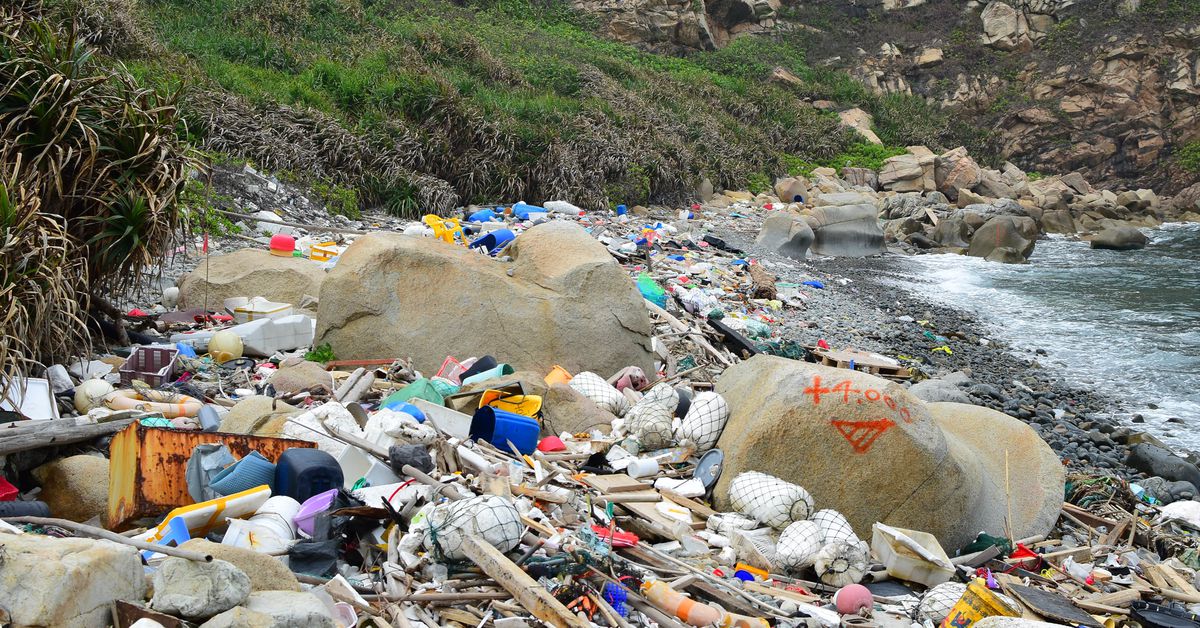
The US is responsible for way more of the plastic polluting the world’s oceans than previously thought, a new study reveals. When it comes to the countries that contributed the most to coastal plastic pollution, the US could rank as high as third in the world, it estimates.
“[The US] outsourced our waste problem to developing countries”
“Plastic pollution globally is at crisis level,” says Nick Mallos, senior director of the nonprofit Ocean Conservancy’s Trash Free Seas program and co-author of the paper published today in the journal Science Advances. “Most problematic is that rather than looking the problem in the eye, for more than 30 years, [the US] outsourced our waste problem to developing countries,” Mallos says.
For years, Asian countries like China and Vietnam have ranked much higher than the US on lists of coastal plastic polluters. But much of the problem actually starts thousands of miles away, in the plastic-hungry US. An older study, conducted by some of the same researchers, ranked the US 20th among countries that mismanaged the most plastic waste in 2010. But that study didn’t look into whether waste was mismanaged after it was exported to another country for recycling. This time, the researchers looked at data for 2016 and considered how waste was treated after it was shipped abroad. They found that America’s share of mismanaged plastic waste jumped by up to 400 percent compared to the 2010 figure.
Americans, on average, generated the most plastic waste per capita globally, according to the study, which was conducted jointly by scientists from the University of Georgia, the nonprofit Ocean Conservancy, and other research groups. On average, an American is responsible for over 280 pounds of plastic waste every year compared to about 120 pounds for a European. After the EU, India generated the next largest amount of plastic waste per capita, with about 44 pounds per year.
In 2016, the US sent more than half of its massive pile of plastic recyclables to other countries, study authors calculated. That amounted to close to 2 million metric tons shipped overseas, of which up to 1 million metric tons likely ended up polluting the environment. Close to 89 percent of exports wound up in countries where more than a fifth of waste is handled improperly, largely because of a lack of waste management infrastructure. To make things even harder for those countries, between 15 to 25 percent of plastics they received might have been too contaminated or low-value to be recycled.
Recycling has become even more complicated
“This study underscores the importance of the United States in terms of meeting efforts to reduce plastic waste, not only here at home, but also abroad,” says Mallos.
Recycling has become even more complicated since 2016, the most recent year for which the study authors were able to gather global data. China, which previously took in most of America’s recyclables, decided in 2018 that it would stop accepting low-grade plastics. That’s led to a scramble to send plastics to other countries in Southeast Asia. Those countries, including Thailand and Malaysia, previously didn’t take in such a high volume of waste, potentially straining their waste infrastructure. In places inundated by a flood of new waste, discarded plastics might be burned — or dumped in open pits, where winds and floods can easily push lightweight materials out to the ocean.
Plastics remain a huge environmental problem, and recycling isn’t powerful enough to solve it. Just 9 percent of the world’s plastic waste has ever been recycled, according to a 2017 study. The vast majority of it will languish for hundreds of years to come in landfills or in the environment — unless the countries at the heart of the problem start to clean up their act.
